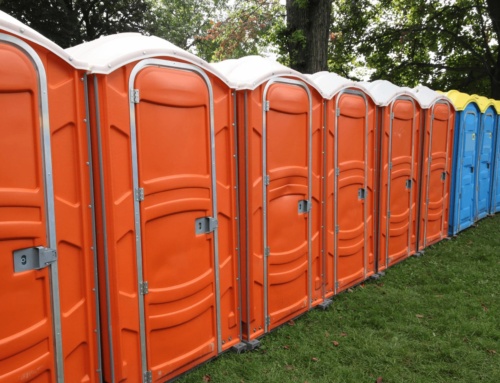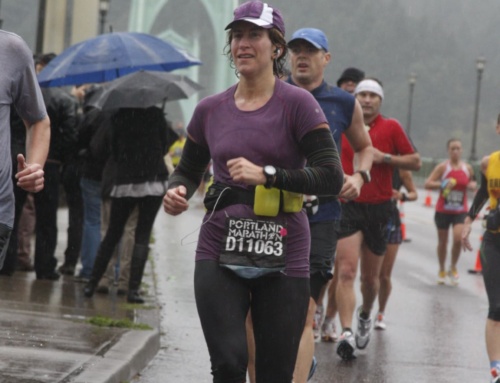Welcome to the AMR Aid Station, a new feature on the Another Mother Runner. At the AMR Aid Station, we will answer and explain your burning + interesting #motherrunner questions, so if you have any, feel free to tweet us @themotherrunner with your question and use #AMRAidstation; you can also comment in below or email us.
“I live in the cold, and am headed to spring break in the warm. How should I adjust?”
Lucky you! Central New Jersey, where I live, was so warm in February that I packed away my parka and wool blanket.
Big mistake! Four Nor’easters dumped a ton of snow in March, the last batch on the first day of spring.
Nice. [ironic sarcastic eyeroll emoji]

March madness at my house in Central New Jersey! Oh, the fun.
Cold winter, warm spring is the annual concern for people running the Boston Marathon, historically held on the third Monday in April. They do all their long runs through the cold winter, and arrive in Beantown not acclimated to heat.
In the old days, Boston used to start at noon (before a 12:30 start was added for a second wave of “slower” runners). Today, the start is a little earlier (especially if you’re fast), but you’re still running through the heat of the day. And because trees haven’t yet bloomed in Massachusetts, there is NO SHADE on the course. When I ran it, even with sunscreen, I always came home with tan lines.
In one of Boston’s “hot” years—temps reached 86—I was at a pre-race panel, and top of everyone’s mind was “How much should I slow down?”
My then co-worker Bart Yasso said something like,10 to 15 seconds per mile slower than your planned pace.
I wince at that answer to this day. Although maybe it’s a reasonable adjustment if you can easily handle 6 minutes per mile.
For mortals (like me) in the 9 minutes+ per mile range, I’d say more like 30 to 60 seconds per mile. Or even better, don’t look at your watch or your time, and run whatever feels easy because Boston is hard!

No shade in Boston! In 2014 it was “only” 61 degrees at the start, 72-ish at the finish. Too hot for me!
“But I trained to run a 3:40, and I’m in great shape!” said another co-worker pal, WHO SHOULD HAVE KNOWN BETTER. “I’m sticking with my plan.”
Stubborn runner. You know where this story is going, don’t you?
That 3:40 goal turned into a 5:29 sufferfest, my pal’s worst marathon ever.
And I left out the parts where she got dizzy, walked the last 10K, and threw up.
“Haha,” you say. “But I am not running Boston on spring break (thank God). I just want to stay sane and reasonably fit.”
Lucky you!
Here’s how to adjust:

Coolest Spring Break ever: Full moon rising on safari with my daughter in Kruger National Park, South Africa, April 2017.
Slow down
How much? How stubborn are you? You can try Bart Yasso’s 10 to 15 seconds per mile if pace is your bogeyman, but don’t come crying to me if you throw up.
Pay attention to how you feel and adjust on the fly: If you start a run at 55 degrees but it warms up to 90, well, you know.
Better yet: Instead of logging mileage, just go out for however much time you want to spend on your run—30 minutes? An hour? And remember there’s no shame in walking. It’s spring BREAK, isn’t it?
Soak up scenery
Where are you going, anyway? It’s probably pretty nice. Why would you want to rush through your run? (Especially if you’re going back to a hotel room full of starving children screaming for chocolate-chip pancakes. MOM!)
If you ever get a chance to run the Big Sur Marathon, at the end of April, the hills and wind gusts WILL slow you down—20 minutes or more. But that’s okay! Look around you. It’s Big Sur! Enjoy. It.

With my former co-worker and buddy Bart Yasso, at the finish of the 2011 Big Sur Marathon.
Drink a lot
Every runner’s hydration needs are different based on a calculus of heat, humidity, fitness, exertion, acclimation, altitude, how much wine you drank last night (ahem), and most importantly—individual sweat rate. You know if you sweat a lot. You know if your sweat is salty (because it stings your eyes and stains your clothing). Hydrate, people!
Bonus note: This is where your NUUN tablets come in so handy—easy to pack, they make your water taste better without adding a ton of calories AND they have those crucial electrolytes you lose through sweat.
Give yourself grace
If you are running (or walking!) on your spring break, you are an awesome BA mother runner modeling exemplary behavior. Pat yourself on the back. Have a pastry.
“But I have a goal race after my break!” you wail.
One spring break many years ago (2002) a month before a goal marathon, I was on a camping safari in Botswana (yes, bragging!). It wasn’t safe to run off the camp site—because ELEPHANTS! LIONS!—so I had to do loops around our tents.
Yes, I felt ridiculous. Yes, I couldn’t do more than 20 minutes at a time. But also yes, I finished the marathon in a respectable enough time. AND I’d been in BOTSWANA. So there.
(Last April, I took my daughter on a hiking safari in Kruger National Park AND ran the very warm Two Oceans 56K Marathon, neatly combining all the themes here for the coolest Spring Break ever! [This year we’re staying home.])

South African elephant, spring break 2017. I’m just showing off.
Wear sunblock
You got this, right? You’re a mother! I’ll just add that a few of the Boston marathons I ran were not technically all that warm—though 66 degrees in the sun for an unacclimated white girl like me is too hot—I always came home a little fried, even with sunscreen.
Beware of altitude
If your spring break plans include exertion at altitude—hello, Dimity!—you need to heed all of this advice plus add salt.
Lauren Antonucci, a certified sports dietician, owner of Nutrition Energy and nutrition consultant for the New York City Marathon, says altitude will kick your butt. You will feel more tired (oh great). You will need a ton more fluid. Your hydration plan needs to include sodium; she recommends up to 750 grams per 32 ounces of fluids. Most sports drinks and gels don’t include nearly that much. Simply add some salt to whatever your drinking.
Don’t run on sand
But wait, it’s so pretty at the beach! Didn’t I just tell you to soak up the scenery?
Yes, but sand is soft, which strains your calf muscles and Achilles tendons in ways you’re probably not used to. The beach is most likely slanted, which throws your whole kinetic chain out of balance. And if you insist on running barefoot, you know you’re going to end up with blisters under the ball of your foot, right?
Okay, okay, it’s the beach. Stubborn runner.
Just do me this favor: Run an out-and-back, so at least your kinetic chain is thrown out of whack this way AND that way. Try to run on sand that is firm and as level as possible. WALK. The better to soak up the scenery, right?
Spring break! Lucky you!







Leave A Comment
You must be logged in to post a comment.